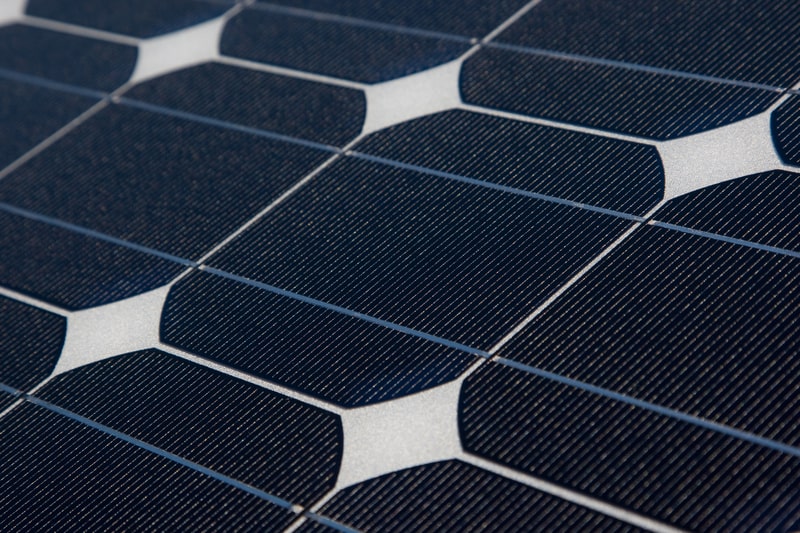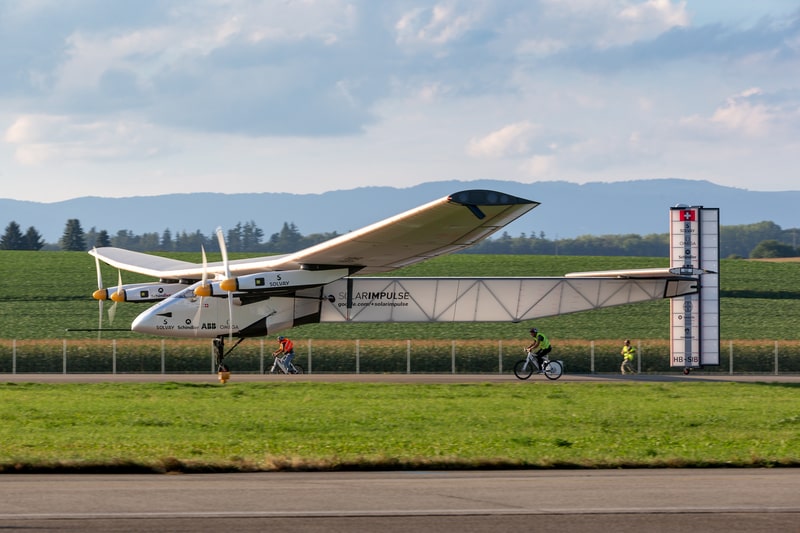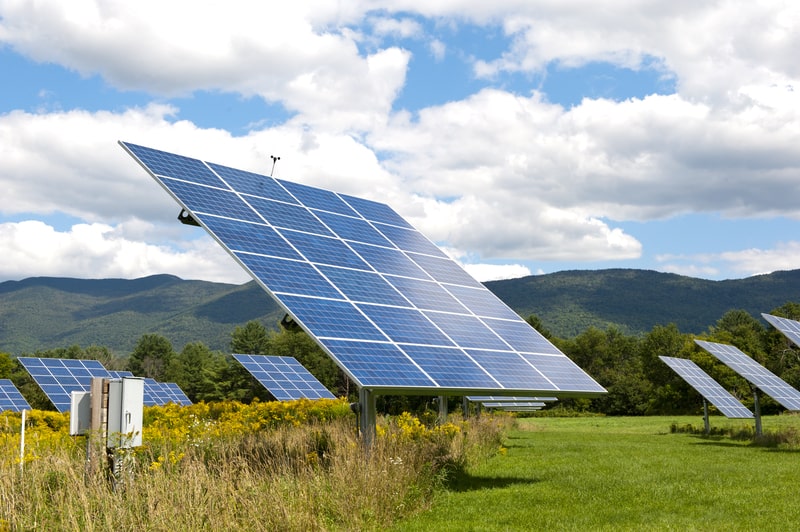Last updated on September 7th, 2023
For as long as humans have lived, the Sun has been a major source of fascination – and energy. Recent concerns over global climate change have seen us moving more towards harnessing the power of the Sun’s rays to generate renewable, sustainable energy. Solar energy is not new but dates back to the early 1500s. From solar panels to solar inventions, we look at everything to do with solar energy.
The History of Solar Energy
1. Centuries ago, around 1500, Leonardo da Vinci envisioned the concept of large-scale solar power, demonstrating the forward-thinking nature of early pioneers in recognizing the potential of solar energy. He even designed a water heater system that used exclusively solar power.
2. In 1839, a pivotal moment in solar energy history occurred. French physicist Alexandre Edmond Becquerel discovered the photovoltaic effect. This unveiled the potential of using the sun’s energy for practical applications, paving the way for a solar revolution.
3. A significant milestone in solar energy unfolded in 1878 when French engineer Augustin Mouchot constructed the first solar-powered steam engine. Through this ingenious creation, Mouchot showcased the ability of solar energy to power industrial processes.

4. Charles Fritts, an American inventor, etched his name in the annals of solar energy history in 1883. Fritts developed the first-ever solar cell by skillfully coating selenium with a delicate layer of gold. This laid the foundation for modern solar technology.
5. 1891 witnessed an exceptional advancement in solar energy as American inventor Clarence Kemp obtained a patent for the first solar water heater. This introduced solar energy into residential settings, offering a sustainable alternative for heating water.
6. The 1950s became a remarkable era in solar technology, with Bell Laboratories’ creation of the first practical silicon solar cell in 1954. This breakthrough catapulted the development of solar panels, propelling the world towards efficiently converting the sun’s rays into electricity.
7. Space exploration and solar energy intertwined in 1958 when the Vanguard 1 satellite became the first spacecraft powered by solar cells.
8. 1973 marked a turning point in the adoption of solar energy. The world was in an oil crisis, sparking a renewed interest in sustainable alternatives. Solar energy offers a clean, abundant, and reliable source of power.
9. In 1977 the Solar Energy Research Institute (SERI), now known as the National Renewable Energy Laboratory (NREL), was established. This institution played a vital role in advancing solar energy research and development.
10. A landmark achievement occurred in 1982 when the Solar One, the world’s first large-scale solar power plant, was constructed in California’s Mojave Desert. This facility showcased the immense potential of solar thermal technology.

11. The Solar and Heliospheric Observatory (SOHO) launch in 1995 marked a new chapter in solar science. This satellite set off on a mission to study the Sun’s activities to enhance our understanding of the celestial body that fuels solar energy.
12. Spain emerged as a trailblazer in solar energy by unveiling the PS10 solar tower in 2007. This concentrated solar power (CSP) plant became the largest of its kind.
13. The rapid decline in the price of solar panels from 2009 to 2017 revolutionized the solar energy landscape. With costs plummeting by 76%, solar power became increasingly affordable and accessible.
14. The Ivanpah Solar Power Facility, operational since 2014, is a testament to concentrated solar power technology. This facility has 347,000 mirrors in the Californian desert that are software controlled to follow the sun and generate electricity.

15. In 2016, the Solar Impulse 2 captured global attention by completing a groundbreaking around-the-world flight powered solely by solar energy.
16. The South Australia region in Australia achieved a groundbreaking feat in 2022, briefly relying on 100% wind and solar power generation. For ten days, the region ran on only renewable energy sources.
17. Solar energy made significant strides in 2022, accounting for over 4.5% of global electricity generation. Solar is the third largest renewable energy source, after water and wind.
18. Tesla’s Gigafactory, established in Nevada in 2016, emulates solar energy’s mass production capabilities. It’s one of the world’s largest solar panel manufacturing facilities and has a $5 billion factory.
19. 2020 witnessed a significant tipping point in the energy sector. For the first time in history, the United States generated more electricity from renewable sources than from coal, with solar energy playing a vital role in this momentous transition toward a cleaner and more sustainable energy mix.

20. In November 2022, the company Lightyear started delivery of the Lightyear 0. This car has been described as the world’s first-ever production-ready solar-powered car and comes at a massive cost of around $280,000.
21. The cumulative global installed solar capacity surpassed a milestone in 2022, reaching 1177 gigawatts (GW). Solar power capacities are forecasted to reach 1870 (GW) by 2025.
22. Concentrating Solar Power (CSP) systems harness the sun’s energy by utilizing different mirror arrangements to generate heat and power through a heat engine. In contrast, photovoltaic (PV) solar panels utilize the sun’s light rather than its energy. Unlike CSP, PV directly converts light into electricity.
The World of Solar Panels
23. Solar panels convert sunlight into electricity through the interaction of photons with silicon molecules within the solar cells, effectively harnessing the sun’s energy to power our homes and devices.
24. After the discoveries of Edmond Becquerel and Charles Fritts, Edward Weston patented a solar cell that converted light into electricity by utilizing thermopiles, and bars of dissimilar metals, in 1888.
25. In the same year (1888), Russian scientist Aleksandr Stoletov invented the first solar cell based on the photoelectric effect, which involves the release of electrons when light falls on a material.
26. This was first observed by German physicist Heinrich Hertz in 1887. He discovered that ultraviolet light generated more power than visible light in the photoelectric effect. In modern times, solar cells use the photoelectric effect to convert sunlight into power.
27. American inventor Melvin Severy was the one who received patents in 1894 for solar cells. These patents were to produce constant electric current using the sun’s power.
28. William Coblentz received a patent in 1913 for a “thermal generator” that used light rays to generate an electric current for useful work.
29. In the 1950s, Bell Laboratories developed a more efficient solar cell using semiconducting materials like silicon, achieving 6 percent efficiency.
30. Daryl Chapin, Calvin Fuller, and Gerald Pearson invented the silicon solar cell at Bell Labs in 1954. It was considered the first practical device for converting solar energy to electricity.

31. The University of Delaware constructed “Solar One,” one of the first solar buildings, in 1973. The Solar One integrated solar thermal and photovoltaic power into the rooftop.
32. The Solar Energy Research, Development, and Demonstration Act of 1974 marked a commitment by the US government to make solar energy viable and affordable for the public. But despite this, solar energy experienced slowed growth in the 1980s due to the drop in traditional energy prices.
33. Although traditional solar panels on rooftops have often been considered an eyesore for neighbors, companies like Tesla have developed discreet solar cell technologies integrated into existing roof tiles and building facades. And by 2023, they installed over 3,000 solar roof systems in the U.S.
34. A solar panel can be compared to a picture frame due to its rectangular shape, metal frame, and protective glass on the front. It consists of more than one layer, with the most crucial layer housing the matrix of solar cells.
35. Each solar panel typically contains varying solar cells, ranging from 32 to 96. These cells are connected side by side and can generate electricity with an output ranging from 230 to 275 watts.
36. Thermal solar panels utilize the sun’s warmth to heat water, while photovoltaic (PV) solar panels convert sunlight into electricity, showcasing the diverse applications of solar energy technology.
37. Photovoltaic solar panels predominantly utilize silicon (95%), the second most abundant element on Earth after oxygen, ensuring a sustainable supply of materials for solar energy production.

38. Solar panels installed on a south-facing orientation yield optimal performance, capturing maximum sunlight throughout the day.
39. Solar panels are exceptionally low-maintenance, as they have no moving parts, requiring only periodic cleaning to ensure optimal efficiency and longevity. They are estimated to last at least 30 years, with an annual minute loss of 0.8% of output.
40. Contrary to popular belief, solar panels generate electricity even on cloudy days, albeit at a slightly reduced capacity. They are about 23.8% less effective than on a clear, sunny day.
41. Scientists have significantly progressed by developing multi-junction solar cells with six photoactive layers. These advanced cells have demonstrated an impressive efficiency of nearly 50% in laboratory settings and close to 40% under real sunlight.

42. Incorporating battery storage systems enables solar power to be utilized during nighttime hours, further enhancing the reliability and independence of solar-powered homes and businesses.
43. The price of solar panels has decreased by a remarkable 80% since 2008, making solar energy increasingly affordable and accessible to a wider range of consumers and businesses.
44. Solar panels exhibit enhanced efficiency in cooler temperatures, debunking the misconception that solar power is only effective in hot climates and highlighting its adaptability to various geographic regions.
45. Monocrystalline solar panels, with their darker color and higher efficiency, offer an effective solution for maximizing solar energy generation, while polycrystalline panels, often bluer in appearance, provide a cost-effective alternative for widespread adoption.
46. Monocrystalline solar panels, characterized by their black color, generally exhibit an efficiency range of 15% to 20%. However, certain innovative models in experimental stages have shown the potential to achieve efficiencies close to 50%.
47. Typically, polycrystalline panels have an efficiency rating of 13% to 16%. Although the difference is only a few percentage points lower than monocrystalline panels, it can make a significant impact when multiplied across multiple solar panels.
48. Besides rigid solar panels, flexible solar panels are gaining popularity. They enable greater mobility and versatility in solar energy utilization. They are especially popular in applications such as recreational vehicles like the Lightyear 0.
Cool Inventions Using Solar Energy
49. With the invention and development have come many more interesting inventions. Suryagen Renewables has developed a solar-powered water purifier that can convert 3 liters of polluted water into 1.5 liters of pure water daily.
50. Perhaps one of the best innovations is the Central Mechanical Research Institute’s solar-powered tree. This tree generates 10 to 15% more electricity than ground-based solar plants, providing electrical needs for five houses.
51. By using solar air conditioners, people can reduce electricity bills by up to 20-30% while protecting the environment from harmful CFC emissions.

52. A sports stadium in Kaohsiung, Taiwan, is powered by 8,844 solar panels on its roof, providing enough electricity to meet 80% of the local households’ needs. Solar energy is the future when it comes to large-scale renewable energy sources.
53. With off-the-grid living and the “van life” lifestyles becoming more popular, inventions such as portable solar panels are being developed daily. The Renogy 100-watt 12 Volt Foldable suitcase allows travelers to charge their gadgets even in places without access to the electricity grid.
54. Even farmers have joined the solar energy community. Solar fence chargers, such as the Premier Solar IntelliShock 60, offer a portable and efficient solution for protecting plants and animals on farms.
Solar Energy in the Guinness World Records
55. On April 28, 2023, Mustafa Shabbir Akolawala (Zest Enterprise) set a remarkable world record in Mumbai, India. They installed 84 solar panels on a billboard, covering an area of approximately 3200 sq. ft. These panels generate around 60,000 units of renewable energy.
56. Apple’s headquarters in Cupertino, California, holds the record for the largest solar-powered building. It covers 260,000 square meters and integrates 17 MW of solar power from rooftop panels and an extra 4 MW from biogas fuel cells.
57. SPIC Nei Mongol Energy Co., Ltd. (China) holds the record for the largest solar panel image, featuring 196,320 solar panels arranged to depict a horse in China’s Kubuqi Energy Ring Desert Paradise. Covering 1,398,421 m², the panels generate 500,000 KWH daily.
58. The International Space Station boasts the largest solar array in space, with 3,244 square meters of solar panels. This includes legacy arrays and flexible IROSA panels, generating 120 kilowatts of electricity and boosting the station’s total installed capacity to 215 kilowatts.
59. China is the top solar power generator globally, as reported in 2018. According to the International Renewable Energy Agency, China has an impressive installed capacity of 175,286 MW, generating 178,070 GWh of electricity from solar sources.
60. Data Hub Integrated Solutions MORO L.L.C achieved the world record for the largest solar-powered data center in Dubai, UAE. This net-zero energy facility serves national and global clients, covering an area of 16,031.925 square meters (172,566 ft² 29,448 in²).

61. Switzerland holds the world record for the highest per capita solar usage, with an impressive 1.82 watts per capita.
62. China’s Three Gorges New Energy has the largest floating solar farm, with an impressive installed capacity of 150 MW. Completed in May 2018, the Huainan City, China project floats atop a lake formed by a collapsed mine.
63. The innovative Three Gorges New Energy farm is set to reduce approximately 199,500 tons of carbon dioxide emissions annually, equivalent to using about 53,000 tons of coal.
64. Germany invested over $14 million in renewable energies, specifically in solar photovoltaics and wind power, in 2007.
65. In a collaboration between Fraunhofer Institute for Solar Energy Systems (Germany), CEA-LETI, and Soitec (France), the most efficient photovoltaic cell was developed in 2014, achieving an impressive conversion rate of 46% for sunlight into electricity.
66. This experimental multi-junction cell is a breakthrough compared to production-ready solar cells with 20-25% efficiency. This cell comprises sub-cells calibrated to capture specific wavelengths of light and is used in concentrator photovoltaic systems.
67. CSIR – Central Mechanical Engineering Research Institute (India) set the world record for the largest solar tree, covering an area of 309.83 square meters (3,334 ft² 11.76 in²) in Ludhiana, India, on January 21, 2022.
68. The solar tree consists of 160 identically sized solar panels installed on the institute’s campus, dedicated to developing farm machinery. The campus has achieved self-sufficiency in meeting its electrical needs through this innovative solar installation.
69. The MS Tûranor PlanetSolar, a catamaran powered solely by solar energy, embarked on its maiden voyage in 2010. Measuring 31 meters long and 15 meters wide, the boat features 537 square meters of solar panels on its upper surface and is the largest solar-powered boat.
70. Kenjiro Shinozuka of Japan holds the world record for the fastest speed attained by a solar-powered vehicle. Driving Ashiya University’s Sky Ace TIGA, he achieved a remarkable 91.332 km/h speed at Shimojishima Airport in Miyakojima, Okinawa, Japan, on August 20, 2014.
71. Marco Fucci di Napoli and Eric Houston, both from the USA, set the world record for the fastest solar-powered train. Achieving a speed of 49.457 km/h this remarkable feat took place in Sonoma, California, USA, in 2021.
72. The Saudi Falcons Club and Restart LLC, based in Saudi Arabia, hold the world record for the longest line of solar-powered street lights. Achieved on December 7, 2021, in Riyadh, Saudi Arabia, the line consists of an impressive 468 lights, spanning a total length of 9,735 meters.
73. The Chamber of Marathwada Industries and Agriculture (CMIA) and Simplified Technologies for Life, both from India, set the world record for the largest solar oven cooking class. The class involved 4,780 participants, each with a solar oven for the cooking lesson.
74. China holds the world record for the highest solar power capacity, reaching an impressive 204,700 megawatts, according to the International Energy Agency’s report in November 2020. This capacity accounts for approximately 3.9% of China’s total energy consumption.
Solar Power Statistics
75. The world’s cumulative solar energy capacity is 940 GW, representing the maximum amount of energy all global solar installations can simultaneously produce.
76. China leads in solar energy generation with an impressive capacity of 228 GW, showcasing its commitment to renewable energy development.
77. Solar power accounts for 3.9% of the United States’ energy mix, indicating a growing reliance on clean energy sources.

78. In the US, approximately 3.7% of homes have installed solar panels, enabling homeowners to generate clean energy and potentially save on electricity costs.
79. Globally, the solar industry employs 3,975,096 people, with 255,037 employed in the United States, highlighting the significant job opportunities within the sector.
80. An astonishing 51.4 billion solar panels, each rated at 350W, would be needed to power the world. In terms of size, this massive solar power plant would cover an area of 115,625 square miles.
81. Considering the United States, we would need 7.85 billion solar panels, creating a luminous landscape of clean energy potential.
82. Solar panels covering an area of 22,000 square miles have the potential to provide enough electricity to power the entire United States.
83. In a remarkable surge, solar photovoltaic (PV) power generation witnessed an unprecedented increase of 270 terawatt-hours (TWh) in 2022, marking a remarkable growth of 26% compared to the previous year.

84. The International Space Station, orbiting above the Earth, relies entirely on solar power to meet its energy needs, showcasing the feasibility and reliability of solar energy in even the most extreme environments.
85. 2022 witnessed a remarkable transformation in the U.S. electric generation landscape, as photovoltaic (PV) power claimed a staggering 46% share of new capacity additions.
86. This significant surge represents a remarkable leap from a mere 4% in 2010, showcasing the exponential growth of solar energy in recent years. Despite this remarkable progress, solar energy contributes 9.0% of the net summer capacity.
87. Under standard conditions, a 5 kW solar panel system has an energy output of approximately 20 units of electricity per day. This makes it ideal for households with a monthly electricity consumption of 600 to 620 units.

88. With over 2 million solar systems installed in the United States, the widespread adoption of solar power has gained significant traction, empowering individuals and communities to take control of their energy consumption.
The Power of the Sun
89. The sun radiates more energy to Earth in a single hour than the entire world consumes in a year, highlighting the vast untapped potential of solar energy.
90. Sunlight, traveling at a speed of approximately 186,282 miles per second, takes just 8 minutes and 20 seconds to reach our planet, providing us with an immediate and constant source of renewable energy.
. . . continue reading on the next page
